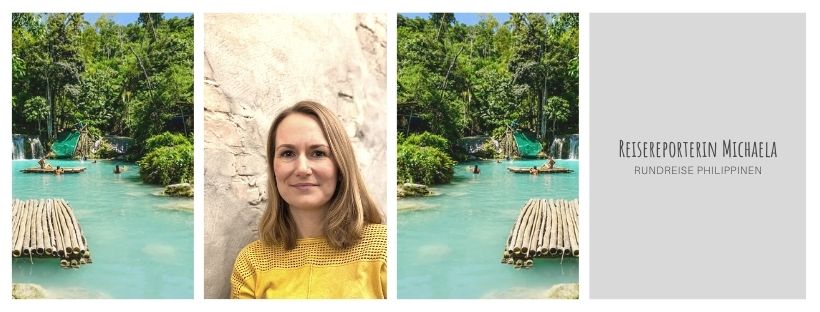Looking for exciting Philippines sights and first-hand travel tips? Then you should definitely stay tuned and read the detailed travel report from our travel reporter Michaela. She spent a month traveling in this wonderful country and visited many exciting and beautiful islands. Just reading it for the first time made us want to book flights and discover some of these places. But let’s just say: With 7,641 islands, the decision isn’t that easy.
Michaela has been to Cebu, Palawan, Bohol, and Siquijor, among others. She herself says that you should plan a rough itinerary before planning a trip to the Philippines so you’re not completely overwhelmed by all the options once you get there. So grab a quick coffee or tea, sit back, and enjoy the following travel tips and great photos from Michaela. Have fun browsing!
These reports might also interest you:
- Journey through the Atacama Desert
- The most beautiful highlights in Tasmania
- My trip to the Maldives
- Round trip through North Macedonia
- Tonga in South Pacific
- My trip through Mexico
- Cool tour of Cornwall and Devon
- My tour through Myanmar
- On your own through Botswana
- The Indonesian Moluccas
- Top Highlights on Nusa Penida
- Cappadocia in Turkey
- These reports might also interest you:
- Is it gray and cold at home? Then off to the Philippines!
- Our itinerary for 18 days
- Entry into the Philippines
- Best time to travel to the islands
- Currency & Budget for the Philippines
- My top Philippines attractions
- Transportation in the Philippines
- Our accommodations in the Philippines
- Safety and the environment
- My top tips for the Philippines packing list:
- Conclusion: Philippines attractions
Is it gray and cold at home? Then off to the Philippines!
As part of a sabbatical, I visited the Philippines with a friend in November following a stay in Japan. I associate the Philippines with crystal-clear turquoise water, snorkeling, sun, and island hopping. And island hopping is the key word here, because the Philippines consist of 7,641 islands!
This can be a bit overwhelming when planning your trip, because you not only have to decide what you’d like to see, but also consider the best connections between the islands so you don’t waste too much time traveling back and forth.
Therefore, if you don’t have unlimited time, I recommend planning an itinerary in advance. I would advise against staying for less than two weeks unless you want to focus on just one island. The sky’s the limit here.
Our 18-day route
We chose the following 18-day route: We spent one day in Cebu City (arrival), one day in Oslob (Cebu Island), 4 days in San Juan on Siquijor Island, 4 days in Panglao on Bohol Island, 6 days in El Nido on Palawan Island, and finally another 2 days in the capital, Manila, before returning to Germany.
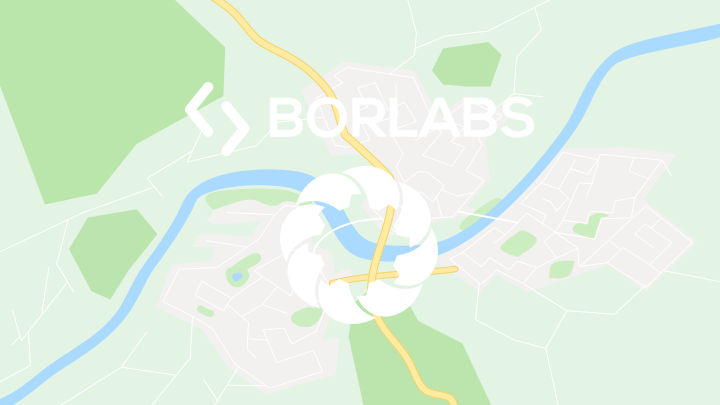
By loading the map, you accept Google’s privacy policy.
Learn more
Load map
Entry into the Philippines
You don’t have to observe anything special when entering the Philippines. A passport valid for at least six months is required. You will be issued a free tourist visa upon entry. There are no mandatory vaccinations required for direct entry from Germany, but as before any long-distance trip, you should check your standard vaccinations and discuss any necessary travel vaccinations with your doctor.
Manila is a huge and chaotic airport with frequent delays. An important tip: It’s best not to book two flights on the same day, for example, from Germany to Manila and then directly on to one of the other islands, as there’s a very high probability that you’ll miss your second flight. I entered the country on a direct flight from Tokyo to Cebu, but my return flight was from Manila via Abu Dhabi back to Germany.
Unfortunately, the plane was on the tarmac in Manila for so long that the connecting flight in Abu Dhabi was canceled, and an unplanned overnight stay in Abu Dhabi was added. Since the return flight was booked with an airline with a stopover, the airline organized the overnight stay in Abu Dhabi and also covered the costs. In such cases, it pays to not fly with the cheapest airline, but also to check the reviews.
Best time to travel to the islands
The best time to travel to the Philippines is the winter months of December to February. Our stay was from mid-November, so it was still somewhat during the rainy season. However, we were lucky and only had one day of rain, thus avoiding the rush during peak season. During the dry months, there is little rain, and you can enjoy temperatures between 24 and 34°C. The rainy season begins in June and lasts until November.
Currency & Budget for the Philippines
In the Philippines, people pay with pesos. For 1 euro, you currently get 58 Philippine pesos (as of January 2025). It’s a good idea to withdraw small amounts of cash frequently during your trip. ATMs are available everywhere in tourist areas. Many shops and restaurants also accept card payments.
For the 18 days, I spent a total of around €800 on food, drinks, accommodation, and all excursions, excluding flights. To put this into context: We ate in a restaurant every morning and evening. At lunchtime, we either had a snack, such as a roll or a fruit shake, or lunch was already included in the trip.
The overnight stays were all mid-range accommodations, guesthouses, and in one case, a hostel, always two people sharing a double room with private bathroom; sometimes with breakfast. We went on three full-day snorkeling trips and hired a tricycle driver for a full day twice. The €800 includes the international round-trip flight, as well as two domestic flights from Bohol to Palawan and from Palawan to Manila.
My Top Sights in the Philippines
1. Snorkeling with Whale Sharks in Oslob
Snorkeling with whale sharks on the island of Cebu in Oslob is certainly an unforgettable experience. This was also our reason for traveling to the island of Cebu. Oslob can be easily reached by bus from Cebu City in three to four hours.
Whale sharks are sharks that can grow up to twelve meters long. They have a wide mouth through which they literally suck in plankton and small fish. Of course, you should treat the animals with respect and avoid getting too close, but you shouldn’t be afraid of being attacked.
As everywhere, there are many different providers, but they’re not very competitive in terms of price. We booked the tour in advance directly through our accommodation, Angler’s Hub & Resort. This is generally recommended, as the tour is very popular during peak season. I would advise against spontaneous bookings. The tour costs around 1,000 pesos, which is roughly €17.
I have to admit that there are many negative reports about snorkeling with whale sharks, and that made us quite nervous. I can only describe my impressions here, but I’m sure opinions vary widely on this topic.
My Experiences with the Tour
Since snorkeling with whale sharks only takes place in the morning at sunrise, we were picked up by a driver around 5 a.m. and taken to the sea. It’s no longer idyllic here, as tourists flock here from all over. However, the organization was very good. Everyone was provided with a mask and snorkel, as well as a life jacket, which is mandatory here. Rows of chairs were available as an outdoor waiting room until everyone was divided into groups for the boats.

The boats are NOT motorized, which reassured me immensely. The boats look like small catamarans that formed a circle a little way out at sea. The whale sharks were then lured with food while we entered the water for about half an hour. It is imperative to stay by the boat or the trailers to the left and right of the boat and not to get too close to the whale sharks.
And then, from my perspective, everything went very peacefully and quietly, and I was able to enjoy the adventure to the fullest. It’s truly incredible to observe such enormous yet peaceful animals, with a few small fish always clinging to the whale shark’s body, its enormous mouth opening and constantly sucking in water and thus its food. For me, this was an unforgettable experience, one I would do again anytime. Of course, everyone has to decide for themselves whether they want to witness this or not.
2. Cambugahay Falls on Siquijor
For me, the Cambugahay Falls on Siquijor are among the top sights in the Philippines. We reached Siquijor the same day after snorkeling with the whale sharks. We took the bus, which the lady of the house had organized for us, to Liloran. It took about half an hour before we reached the ferry to Larena, and then another hour on the road. We then continued on to San Juan by tricycle. You can often arrange a free or inexpensive pickup with the accommodations if you book in advance.

One day on Siquijor, we hired a tricycle driver and agreed on a fixed price for various stops on the island. When we arrived at Cambugahay Falls, we were lucky, as it was almost empty. Things can be quite different, according to reports! Cambugahay Falls are three-tiered waterfalls. In front of each waterfall, there are, of course, pools with warm turquoise water, just like in a brochure. First, you pay 50 pesos/90 cents entry fee before going down some stairs to the first pool.
It’s best to go ahead one person at a time and see how busy it is before paying. It might be worth coming back later. As I said, we were incredibly lucky and it was almost empty, so we were able to swim undisturbed in the various pools and chill on a raft. Be careful: you have to leave your clothes and belongings at the edge of the pools and keep an eye on them yourself. This can certainly get confusing when it’s very crowded. So only bring the most necessary valuables on this trip.

3. Snorkeling with Turtles in the Apo Island Marine Reserve
From Siquijor, we took a day trip to Apo Island to snorkel with turtles in the marine reserve. We booked the tour directly at the nearby Coco Grove Beach Resort. We were able to rent snorkeling equipment at a lower price at our own accommodation. The day tour cost the equivalent of about 30 euros and included the boat ride to the island, snorkeling with the turtles, including the marine reserve fee, and a lunch buffet on the beach.
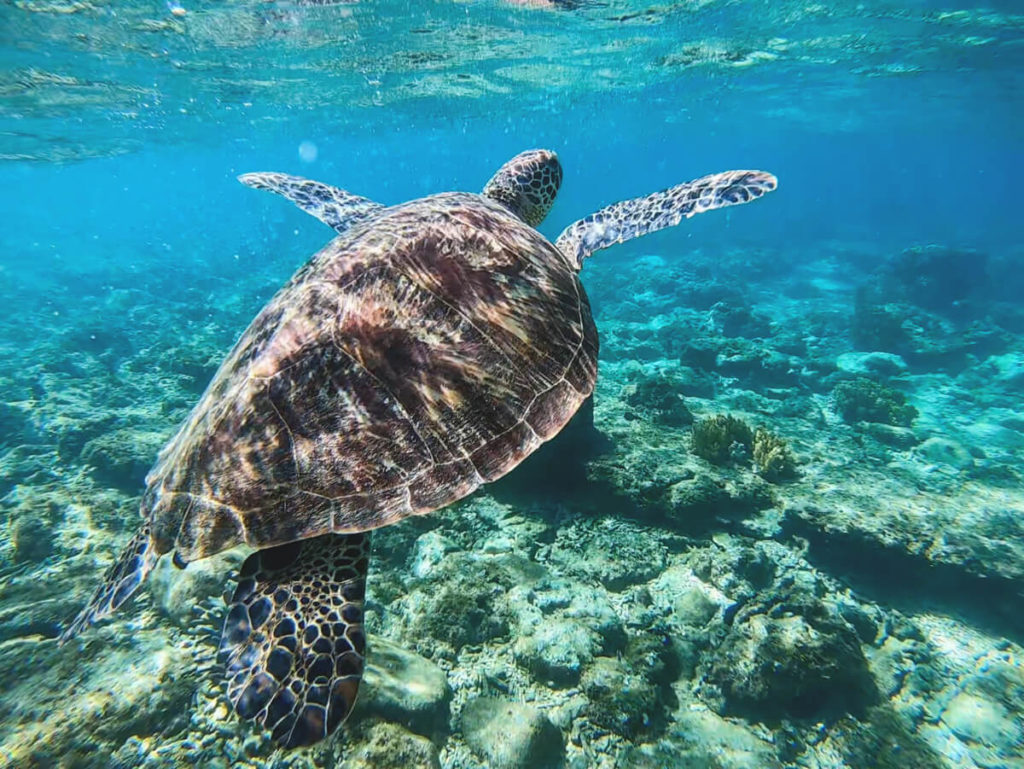
The tour overall was well organized, the food was delicious, and we had time to relax on the beach in addition to snorkeling. The highlight, however, was, of course, the turtles, which our guide introduced us to. Caution: The current is quite strong here, so you’ll be buffeted underwater while snorkeling, and swimming is also very strenuous. In my opinion, this tour is definitely not suitable for children or poor swimmers.
4. Marvel at Tarsiers on Bohol
One animal highlight follows the next: On Bohol, you can marvel at these tiny monkeys, called tarsiers, which are only about ten centimeters long, at the Philippine Tarsier Sanctuary. We reached Bohol from Larena in a 1.5-hour ferry ride and then took a tricycle to Panglao. Panglao is extremely touristy, which you can recognize from a distance by the large golden M. The advantage, however, is that the infrastructure is good, and you can easily reach every attraction on the island from here.
We hired a tricycle driver for a day to explore the island’s highlights, including the Chocolate Hills. However, on the island’s bumpy roads, you need to have good stamina and a strong back in a tricycle. Those with a more sensitive stomach should spend a bit more money and hire a proper car with a driver.
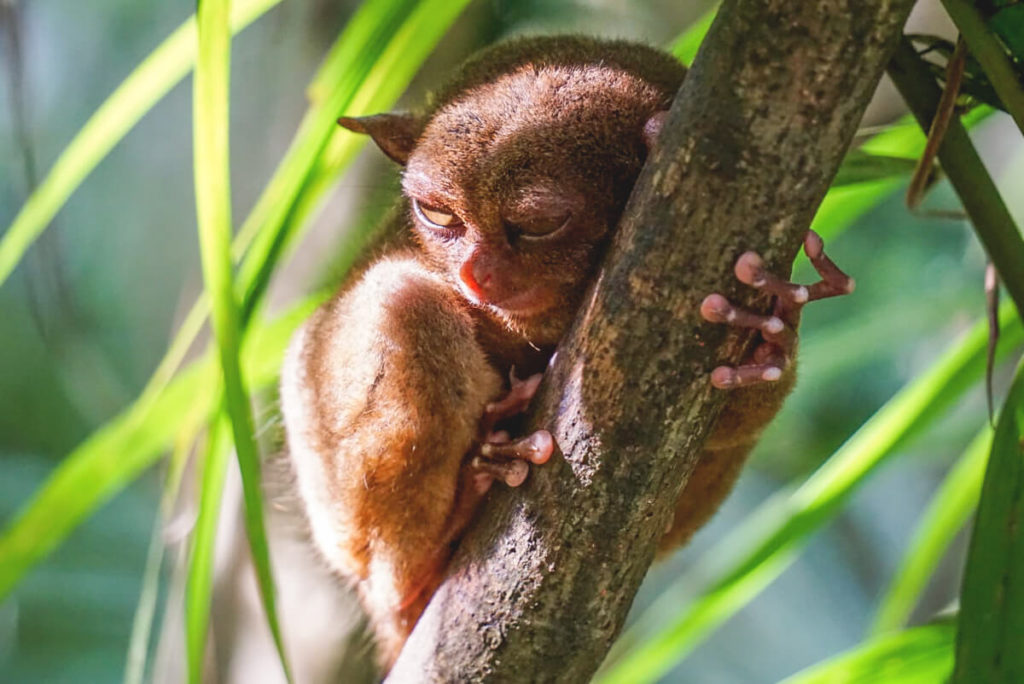
Back to the tarsiers: Tarsiers are nocturnal and have eyes that are enormous in relation to their bodies, which somehow remind me of Gollum from Lord of the Rings. Entrance to the sanctuary costs 60 pesos, or about €1. Don’t expect an extensive program for that euro. You’ll be given a short tour of the sanctuary, can take a few photos here and there, and that’s it. But that’s a good thing, as you don’t want to disturb these small animals unnecessarily.
Therefore, you enter the sanctuary with a guide in small groups, and you have to be very quiet because the monkeys sleep during the day and are extremely skittish. Because the monkeys are so small, you’ll want a zoom camera and a suitable lens for a good photo. Overall, the sanctuary made a very good impression.
5. Paddling in the Big Lagoon, El Nido
I have to admit that the beaches on Bohol and Siquijor didn’t blow me away. My clichéd images of the Philippines were only confirmed in El Nido on the island of Palawan. We reached Palawan from Bohol in a small propeller plane. The landing strip directly behind the beach is spectacular in itself. We then took a bus from the airport to our hostel in El Nido. El Nido is arguably THE hotspot and starting point for snorkeling excursions. The same four tours are offered everywhere: Tours A, B, C, and D, and at the same price everywhere. Tour A, which includes the Big Lagoon, is the most popular. The tours all depart at the same time in the morning from the beach, where you can also rent snorkeling equipment at short notice.
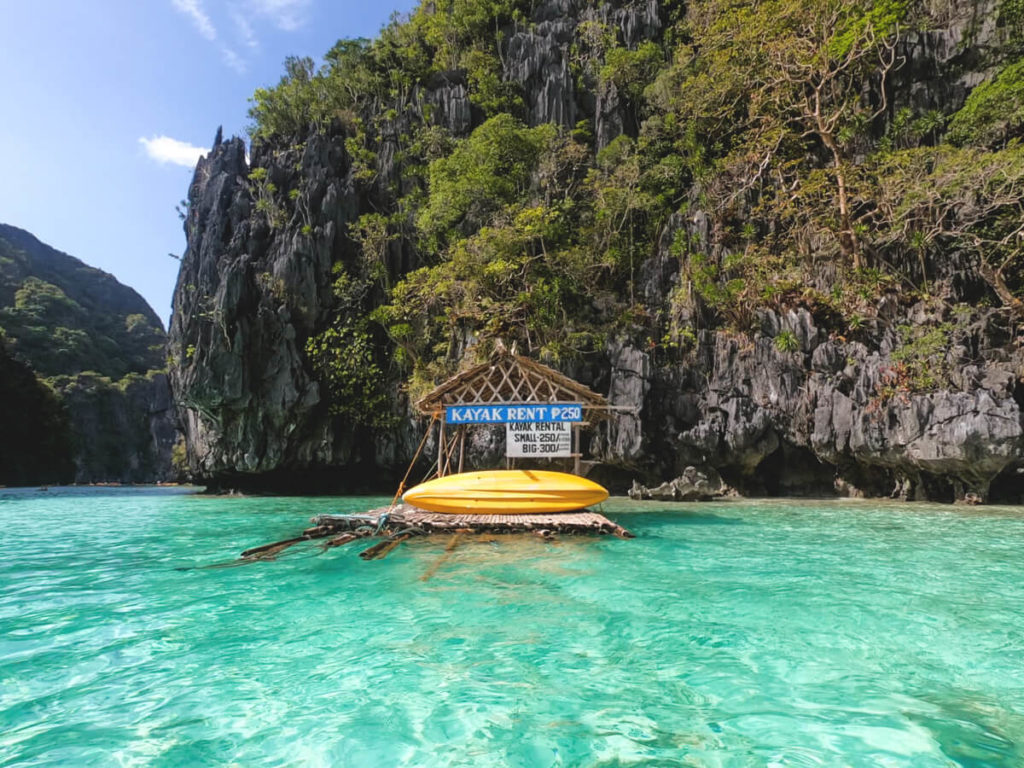
All tours are day trips that visit various nearby spots and include a lunch buffet. Tour A cost the equivalent of just under €20 and was worth every cent. At the Big Lagoon, you can rent two-person canoes and paddle across the lagoon, and of course, get out and swim. The water is dreamy!
You should definitely plan several days in El Nido to perhaps do a second tour. You can also rent kayaks on the beach and explore the nearby islands on your own. I highly recommend this, as it gives you a real Robinson Crusoe feeling and allows you to head to beaches where you’ll be completely alone.
Transportation in the Philippines
As mentioned at the beginning, when planning your route for the Philippines, you should definitely consider how you’ll get from A to B. Some islands have airports, but most flights go via Manila and thus take a lot of time. There are good ferry connections between other islands.
On the islands themselves, you can cover shorter distances inexpensively by tricycle, and longer distances by bus. The infrastructure in the tourist areas is well-developed, so you can always get from A to B easily. Especially with tricycle drivers, it helps to compare prices and negotiate before getting on board. For us, it sometimes made sense to negotiate a fixed price for several stops.
It can also be helpful to ask your accommodation to organize transportation at a fair price to avoid being ripped off. We also experienced being charged more on the bus than the locals. Upon request, we were refunded the excess. So, as everywhere, it’s important to be vigilant and not too trusting.
Our accommodations in the Philippines
We booked all our accommodations in advance via booking.com and, in some cases, had already contacted the accommodations regarding transportation from the airport, port, or train station, or to organize tours.
Book a room here*
The double room including breakfast cost approximately €21 per night. The breakfast was good – a la carte – and the room was okay. Adequate for one night, but not a highlight.
Book a room here*
The double room cost €27 per night. The room was okay. We booked the accommodation primarily because we could organize snorkeling with the whale sharks in advance. The lady of the house was also very helpful with transportation.
Book a room here*
The small hut with a double bed and a small terrace cost €21 per night. The complex has a restaurant where we had breakfast every day and several dinners.
There is also a small shop where you can buy drinks and small snacks, as well as rent snorkeling equipment. The hostess is very friendly and accommodating. Overall, this accommodation is highly recommended.
Book a room here*
At just under €29 per double room per night, the accommodation was comparatively expensive, but it was brand new and in a quiet location. Upon our arrival, we were greeted with water and a fresh fruit platter, which was repeated every afternoon.
The rooms are ultra-modern and air-conditioned. Cookies, coffee, and tea are available, as well as a small terrace. Highly recommended!
Book a room here*
Accommodation in El Nido is significantly more expensive than on the other islands. We slept in a twin room with a bunk bed for €48 a night. Our room wasn’t nice and quite dark. However, the common area is bright and modern, inviting you to linger.
The included breakfast was delicious and varied, with fresh fruit and pancakes. The best part was that there was free water and coffee available around the clock. The hostel’s location is a bit off the beaten track, but everything is within walking distance in just a few minutes. The price-performance ratio is good.
Safety and Environment
At no time did we feel uncomfortable in the Philippines. As in all countries, it’s important to be vigilant and not overly trusting, not to display your valuables, and to avoid dark alleys at night. Before our visit to the Philippines, I often read about garbage problems and dirty beaches. I can’t confirm that at all when we were there.
Quite the opposite: Various things had already been banned by the government, like plastic bags and plastic straws. There were trash cans everywhere, and I didn’t see a single dirty beach. I perceived the Philippines as a country that has recognized its garbage problem and is actively trying to get it under control. Thumbs up!
My top tips for the Philippines packing list:
Snorkeling equipment: You’ll undoubtedly be doing more than just one snorkeling trip. Therefore, I recommend bringing your own snorkeling equipment*, including a full-face snorkel mask and snorkeling shoes. This way, you’ll not only save on rental fees, but you’ll also have high-quality gear with you.
Underwater camera/GoPro: Whether you’re kayaking, snorkeling with turtles, or whale sharks—if you want to capture these experiences on photo and/or video, be sure to bring an underwater camera*. My girlfriend (Instagram: durch.und.um.die.welt) kindly provided me with some great photos from her GoPro.
Insect repellent: This trip is a must (e.g., Nobite*).
Conclusion: Philippines Sights
The Philippines are definitely worth a visit. The choice of places and islands is almost endless. Anyone traveling to the Philippines should love islands and beaches and enjoy snorkeling or diving, as these are the main attractions. The Philippines, like many Asian countries, are very affordable and well-developed for tourism. At times, my expectations regarding dream beaches and ocean were too high, but in the end, I was not disappointed!
